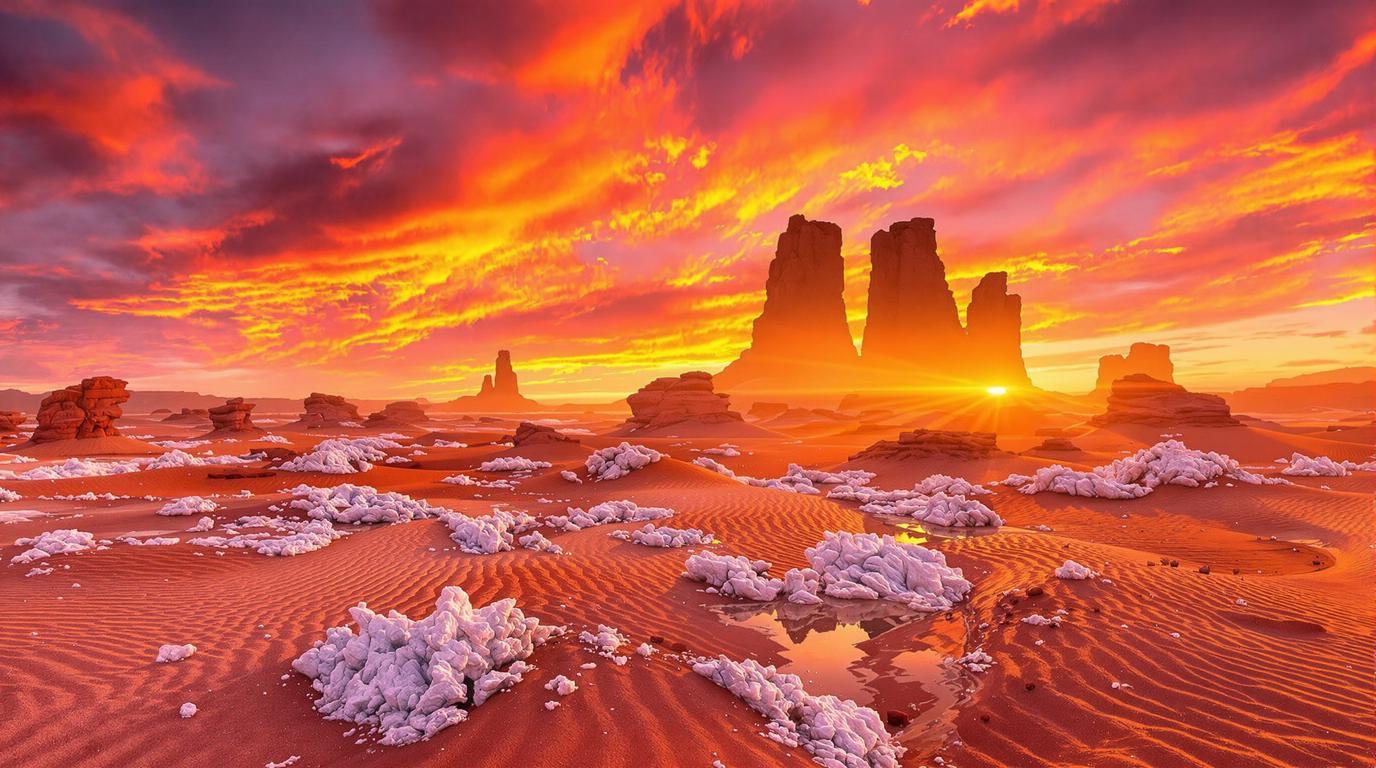Mars on Earth: Exploring Chile’s Otherworldly Valle de la Luna
The alien landscape that captivates explorers worldwide
Just 15 kilometers west of San Pedro de Atacama lies a landscape so surreal that NASA uses it to test Mars rovers. Valle de la Luna (Moon Valley) earned its name from its barren, crater-pocked terrain that more closely resembles lunar topography than anything typically found on Earth. Part of the Los Flamencos National Reserve since 1982, this geological wonder attracts visitors seeking an extraterrestrial experience without leaving our planet.
Where salt sculptures and sand dunes create a cosmic playground
The valley’s most striking features include the Tres Marías – three weathered stone formations resembling sentinels guarding this otherworldly realm. Nearby, the imposing Gran Duna (Great Dune) rises from the desert floor, inviting adventurous souls to climb its sandy slope for panoramic views of the surrounding Martian landscape.
“The first time I witnessed sunset here, I felt like I’d been transported to another planet. The way the light transforms the salt structures from white to gold to deep crimson is almost magical,” explains Miguel Sanchez, a local guide who has led tours through the valley for over a decade.
Caves of salt that defy earthly expectations
Perhaps the most unexpected treasures within Valle de la Luna are its salt caves – crystalline tunnels and caverns formed by ancient evaporated lakes. Walking through these glittering passageways feels like entering a geologist’s dream, with walls encrusted in sodium chloride formations that catch and scatter light in mesmerizing patterns. Remember to bring a flashlight if you plan to explore their depths.
Similar otherworldly experiences can be found at Lake Baikal in Siberia, where crystal clear ice creates another type of natural wonder.
The sunset spectacle that transforms the desert
While Valle de la Luna impresses at any hour, sunset transforms this already alien landscape into something truly transcendent. As the sun dips behind distant volcanoes, the valley becomes a canvas of dramatic shadows and intense colors – deep oranges, purples, and pinks reflect off salt-crusted surfaces, creating a photographer’s paradise.
The best viewpoint for this daily spectacle is Coyote Stone, where visitors gather to witness nature’s light show. Just like Yellowstone’s mesmerizing landscapes, Valle de la Luna demonstrates Earth’s capacity for creating mind-bending natural wonders.
Planning your extraterrestrial expedition
Most visitors explore Valle de la Luna through guided tours departing from San Pedro de Atacama around 4pm, timed perfectly for sunset viewing. Prices typically range from $56-67 and include transportation and expert commentary. For independent explorers, bicycle rentals offer a flexible alternative, though the desert heat demands careful planning.
“Always bring more water than you think you’ll need, wear sturdy shoes, and prepare for dramatic temperature drops once the sun sets,” advises Carolina Flores, environmental scientist at Chile’s National Forestry Corporation.
The stark beauty here rivals that of the Galapagos Islands, though driven by geology rather than biology.
A fragile ecosystem demanding protection
Despite its barren appearance, Valle de la Luna harbors a delicate ecosystem. Recent conservation efforts focus on protecting the area from excessive tourism, with strict rules about staying on marked paths and limitations on visitor numbers during peak periods.
The weather conditions here are extreme, similar to those at Victoria Falls, though dry rather than wet. And like Ireland’s surprising Mediterranean microclimate, Valle de la Luna defies expected environmental conditions.
Walking these ancient salt flats and sculpted dunes feels like departing Earth altogether. In Valle de la Luna, Chile has preserved not just a natural wonder, but a window into other worlds – a place where visitors can experience the closest thing to interplanetary travel without ever leaving our blue planet.
